Elements Of Gameplay Programming For Video Game Designers
Want to know how video games are made? This article walks through the video game development process, and in particular, the 'pipeline' – an industry term that refers to the process of making a video game from scratch. The game development pipeline is the process of building a video game from concept to completion. Much like a production line, the game development pipeline helps organize the flow of work so that everyone knows what they need to deliver and when. The pipeline also helps manage the game development timeline and budget, reducing inefficiencies and bottlenecks. While pipelines vary between projects and studios, the process is fairly similar whether you're working on a AAA, indie or mobile game. A game is continuously evolving, and things which sounded great in theory may not work so well in reality. Therefore, the pipeline is not necessarily a linear process. Work must be sent for creative approvals and can often be sent back for revisions. Pipelines must be flexible enough to factor in revisions and course changes. Video game development is typically divided into 3 stages: pre-production, production, and post-production. This is where every project begins. Essentially, pre-production defines what the game is about, why it should be made, and what it's going to take to make it. You might have a great idea for a type of game, a story you want to bring to life, or you may want to build one that leverages a certain type of technology (e.g. VR, a new controller, or console). In pre-production, you'll find answers to questions like: This stage can last anywhere between a week to a year, depending on the project type, resources, and finances available, and typically takes up to 20% of the total production time. At this point, the team is quite small. There may be a producer, programmer/s, a concept artist (or if you're a one-person operation, you'll be doing most of it!). A video game producer handles the business aspect of the project, particularly the financials. They manage the budget and develop marketing strategies to sell the product. A concept artist sets the tone for the project early on by developing artwork and sketches. These early visuals help form the language of the game, giving everyone working on the project a visual guide to the overall look and feel. The information gathered during this stage of pre-production forms the basis of the Game Design Document. A Game Design Document (GDD) is essentially the game's north star. It's a living document which helps everyone understand and get on board with the greater vision of the project. The GDD includes things like: As a living document, the GDD is continuously updated and refined throughout production. This could be due to technical or financial restraints, or simply realizing that things just don't look, play or work as well as you had initially hoped. Many people, especially smaller developers, like to use more agile development techniques which are less about process and documentation and more about just building things. However, larger studios prefer a different approach. EA, Microsoft, Sony, Ubisoft and other large game companies are highly process-driven and require heavy documentation. It's a big part of how they have achieved success over and over again. A GDD keeps you organized, helps identify potential risks, and lets you see ahead of time who you may need to hire/outsource to in order to bring your project to life. Your game idea may seem fairly straightforward, but once you lay it out in a GDD, you might soon realize just how big and resource-heavy your project is. Projects without a plan are much more likely to run over time and budget. Another reason to have a GDD is to help pitch and finance your game. Potential investors will want to see a solid plan before investing. Finally, the GDD will help you market your product once it's ready to be released. A video game prototype is a raw test that checks functionality, user experience, gameplay, mechanics, and art direction. Prototyping happens in pre-production to test whether or not the game idea will work, and if it is worthwhile to pursue. Many ideas do not make it past this stage. The team will often start with paper designs to test theories and work out many of the nuances of a game or a series of systems quickly, easily and cost effectively. While ideas, psychology, theories and other deep thinking metaphors are important, you can only design so far in your head or on paper. Most game ideas need to be touched, felt, played and tested sooner rather than later. The aim is to get a prototype up and running ASAP to test if your ideas actually work and if the game is as fun as you had hoped. Prototyping can also reveal unexpected challenges, which could potentially change the entire course of your project. It's important to have others test your prototype too, because things that are obvious to you, may not be to others. Placeholder assets are used to save time and money. These low-quality assets stand in for things like weapons and props during the early testing phase, and if approved, they're replaced with final, high-quality versions later on. Placeholder assets can be purchased or found for free online within game development software. They're generally pretty basic shapes, but can also be a little more advanced, for example, this Soul: Cave asset pack by Epic Games for Unreal Engine 4: Production is the longest stage of the pipeline, and it's all hands on deck. Ranging anywhere from 1 to 4 years, production is where the game really starts to take shape. The story is refined, assets (characters, creatures, props and environments) are created, the rules of play are set, levels and worlds are built, code is written, and so much more! Almost everything in a video game is a conscious decision. This includes every character, environment, object, as well as the look, colors, sounds, level of difficulty, rules and point-scoring system. However initial ideas don't always translate so well in reality, so as the work is being done, the game is being continuously tested and refined. Let's take a look at the major game production milestones, and some of the key video game development jobs, keeping in mind that smaller teams will be required to undertake multiple roles, whereas a larger studio will have more staff, many of whom specialize in a particular aspect of production. There are a number of milestones to hit throughout the game development process. Prototype: This is the initial test of the game (which happens in pre-production and is described in detail above). Some games may never make it past this stage. First playable: The first playable gives a much better idea of the look and gameplay. While it is still far from final, placeholders are replaced with higher quality assets, and artwork is added. Vertical slice: A vertical slice is a fully playable sample that can be used to pitch your game to studios or investors. Ranging from just a few minutes up to half an hour, a vertical slice provides a first-hand experience of your game. Pre-alpha: The majority of the content is developed in the pre-alpha stage. At this point in game development, some big decisions will need to be made. Content may get cut, or new elements will need to be added to improve gameplay. Alpha: The game is "feature complete" meaning the main features have all been added and the game is fully playable from start to finish. Some elements, such as art assets may still need to be added, but controls and functionality should be working properly. The QA testers will be making sure everything is running seamlessly and reporting errors back to the team. Beta: At this point, all the content and assets are integrated, and the team should be focused on optimization rather than adding new functions or features. Gold master: The game is final and ready to be sent to the publishing outlet and released to the public. Game dev roles will vary depending on the size and type of studio. These are some of the common positions you'll find. The project manager makes sure the game development process runs smoothly, milestones are met, risks are anticipated/mitigated, and team members are doing what they're supposed to. They are often the centre of communication between the dev and design teams and executives. Project managers are exceptionally organized and must have excellent communication and people skills. Game programmers help develop games by turning design concepts into code to create fully playable games. (Read more: How to become a game programmer or the difference between game programming and game development.) Programmers are often software engineers or computer scientists with a strong programming background, plus a combination of creativity, math skills and patience to successfully code ideas into interactive visuals and sounds. They ensure the game runs smoothly. There are many different aspects of programming, including: In larger studios, you will find specialists dedicated just to AI programming for the game, or employees who only work on the user interface. (Read the interview with Ubisoft AI game programmer Firas Hosn.) The average programmer makes USD $59,010 per year, however, a senior or lead programmer can earn in excess of USD $100,000 per year. A game programming course can equip you with the skills to get your first game programming job in the industry. [featured] A game designer is the creative driver of the game, and generally a cross between a writer and an artist, with some knowledge of programming. The game design production pipeline section involves creating compelling stories, characters, goals, rules, and challenges that drive interactions with other characters, users, or objects. (Learn the difference between game design and programming.) Designers may be responsible for: If working for a larger company, these tasks could resemble individual roles, which we'll cover next. According to Payscale, the average game designer salary is USD $63,838, while a lead can make in excess of USD $93,926 (depending on experience, location, size of studio, and industry). Senior and technical designers may exceed this range. Check out the Game Design Course to get an idea of the skills needed for a job in game design. (More reading: What is game design?) A video game level designer is responsible for creating interesting and fun levels. Their job is to keep the player focused on moving through the game and achieving their goal or mission while reducing the potential of confusion. Because games are far more complex than they used to be, it's common at larger studios to find game designers dedicated just to level design. Level designers take inspiration from the concept art, photo reference, and GDD to sketch believable maps and create physical models of levels. Depending on the type of game and whether it is based on actual events (such as a WW2 battle), they may need to learn all about a particular period of history and research actual locations to ensure the level is realistic and believable. If the game is adapted from a book or movie, they'll need to read/watch the original and look for clues. If the world is entirely fictional, they'll need to use their creativity and draw inspiration from the concept art provided. Then using a level editor (software used to design levels and maps), they build the levels, stages or missions. Their job can also include things like planning start and exit locations, determining where tunnels and hidden passageways will be, places where interactions or dialogue will take place, monster spawn points, trigger points where certain actions will take place, and much more. Level designers are responsible for identifying and fixing bugs, such as players falling out of bounds or getting stuck and not being able to get out. The challenge with video games is that once the game is released, it is out of the designer's hands. The player can interact with the worlds in unexpected ways, bringing to light bugs which had gone unnoticed during development. The level will likely see several versions before becoming final. A level designer can earn on average USD $56,884 depending on studio and location. Senior or more experienced designers can demand a much higher salary. If you're interested in becoming a level designer, the Game Design Course teaches the process of turning concepts into prototypes, how to make a level fun, ensure your level is visually interesting, incorporate storytelling, and build and script your level in a game engine. Game artists can include concept artists, animators, 3D modelers and FX artists. This group is responsible for bringing color, movement, and life to the game. While a concept artist is mostly active during pre-production when they're designing the initial look (typically in 2D), they may be brought in again later in the game development process if new elements are added or the game changes course. A 3D concept artist (which could be the same artist) uses digital sculpting software like ZBrush, Maya and Photoshop to create 3D props, assets and environments. They'll also add textures and details. 3D modelers create models of people, objects, props, weapons, and environments which can then be textured and animated as needed. Modelers need to know how to gather and use high-quality reference materials, especially if they're replicating real objects (e.g. an AK-47, Buzzard Attack Chopper, the Eiffel Tower, etc). Modelers may use photos of the objects they're creating, or drones if the object is much larger and they need an aerial view. If the game is all fantasy, they'll need to reference the concept art and use their imagination to come up with something new and unique. (More reading: What is 3D modeling?) Game animators add depth and realism by adding believable movement to characters, objects, and environments. They'll create storyboards and map out key animation scenes that align with the game's storyline. Animators often need to conduct lots of research (e.g. observing how animals behave and interact with others if working on an animal-based game). Motion capture data can also be used to help create more lifelike animations. CG Spectrum alumnus Kyle Dahl's reel (he is now a Senior Animator at Electronic Arts) FX artists give players a more immersive and entertaining experience by adding stunning effects such as explosions, smoke, fire and liquid simulations, and weather events such as rain, lightning, blizzards, etc. Game FX artists tend to use software such as Houdini FX or Maya, but should also have experience game engines such as Unity or Unreal Engine 4. Cinematic VFX Reel from Gregory Hird-Rutter The sound experts develop realistic sound effects, record voice-overs/dialogue between characters, and create soundtracks that set the mood for players, adding suspense or audio cues (e.g. opening music, menu pause music, marking a victory, etc). Video game testers are essential in the game development process! These people test games, look for bugs and ensure the game runs smoothly and instructions are clear for players. They report errors to the dev team in what's sometimes known as a bug sheet. Besides the game development roles mentioned above, larger studios may have the capacity to bring on a number of additional specialists, such as: Later in the game development process, the product team plays more of a role, helping to handle the marketing and distribution of the game. Once production is complete and the game has shipped, the game development process continues with some team members being relegated to maintenance (fixing bugs, creating patches) or creating bonus or downloadable content (DLC). Others may move onto the sequel or the next project. A post-mortem or debrief may be held to discuss what worked/didn't work and determine what could be done better next time. All the design documents, assets and code are finalized, gathered and stored, in case they are needed in the future. --- If you want to make video games, understanding the game development process is essential. Regardless of where your role sits within the pipeline, knowing every department's purpose and order will help you work efficiently and reduce costly problems down the track. You don't need to know how to do everyone's job, but you will need to know how your work affects theirs and how to hand over usable work to the next stage of production. An understanding of the process will also make you more employable, as every major studio uses a video game production schedule. Here's some more reading to help you in your quest: Header image: Mortal Kombat 11 © 2019 Warner Bros. Entertainment Inc. Developed by NetherRealm Studios CG Spectrum is a game development school and Unreal Academic Partner offering specialized game art, design, programming, and game development courses for beginner and advanced students. Be mentored by industry experts who have worked for Ubisoft, Microsoft, EA, and other major game studios and learn the game development process step by step, graduating with a portfolio of original work! Learn Game Development 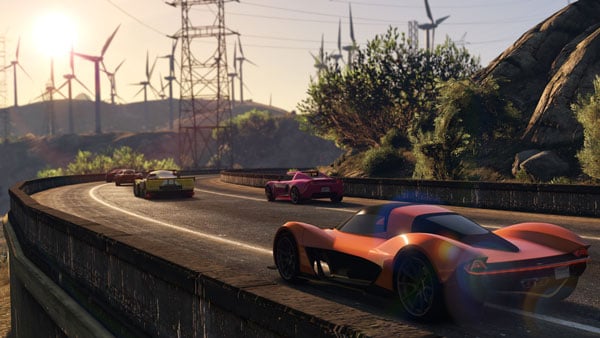 Grand Theft Auto V reportedly cost $137M to make and $128M to market (source: The Gamer)
Grand Theft Auto V reportedly cost $137M to make and $128M to market (source: The Gamer) What is the game development pipeline?
The 3 stages of game development
1. Pre-production
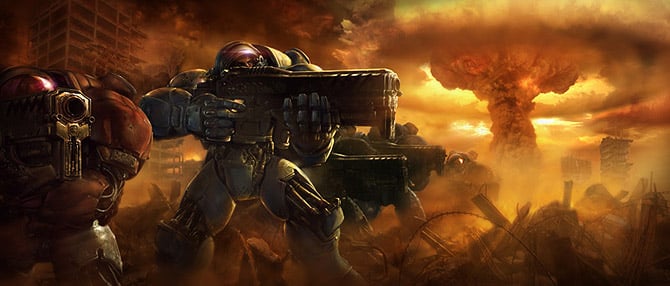 Concept Art from Starcraft 2: Wings of Liberty, by CG Spectrum mentor Brian Huang, Blizzard Entertainment. More reading: Interview with Brian and What it's like to be a concept artist.
Concept Art from Starcraft 2: Wings of Liberty, by CG Spectrum mentor Brian Huang, Blizzard Entertainment. More reading: Interview with Brian and What it's like to be a concept artist. The Game Design Document (GDD)
Prototyping
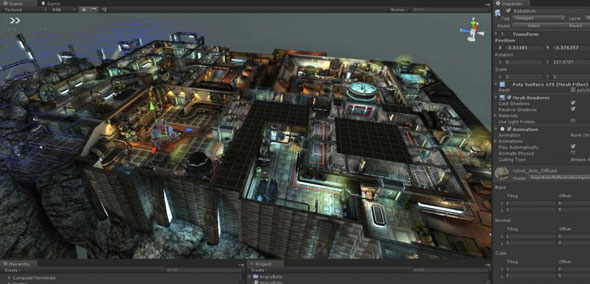
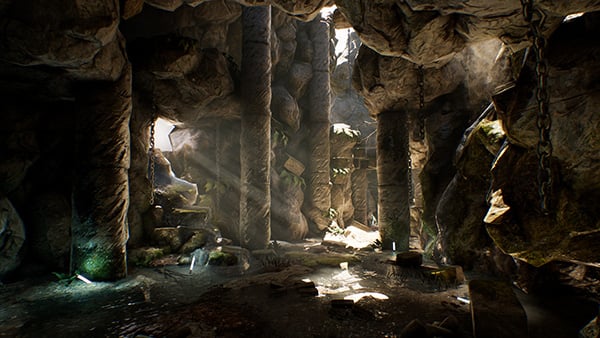
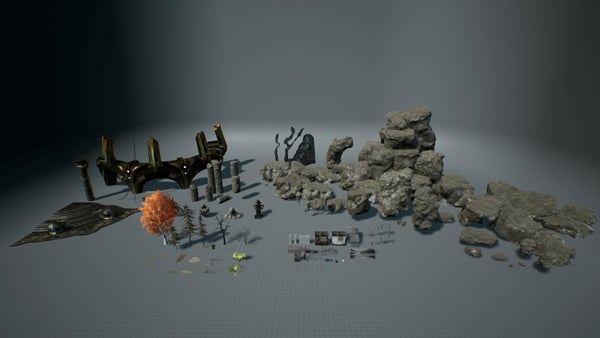 Soul: Cave placeholder asset pack by Epic Games for UE4
Soul: Cave placeholder asset pack by Epic Games for UE4 2. Production
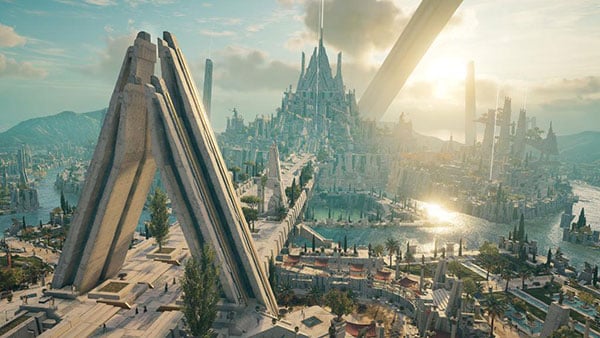 With players expecting movie-quality graphics, 75-90% of the game budget goes to artwork, according to industry veteran Troy Dunniway, who created CG Spectrum's Game Design Course (Image: Assassin's Creed Odyssey, Ubisoft)
With players expecting movie-quality graphics, 75-90% of the game budget goes to artwork, according to industry veteran Troy Dunniway, who created CG Spectrum's Game Design Course (Image: Assassin's Creed Odyssey, Ubisoft) Production milestones
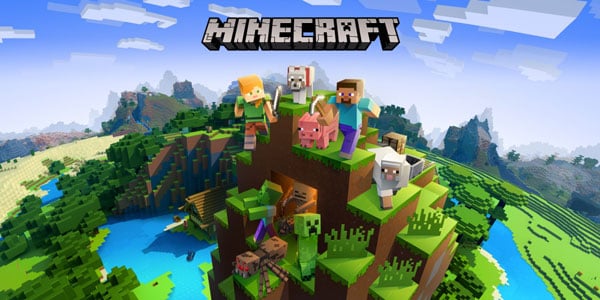 One of the best-selling games of all time, Minecraft has over 100 million monthly active players
One of the best-selling games of all time, Minecraft has over 100 million monthly active players Key game development roles
Project manager
Game developers / programmers
Game designers
Level designers
Game artists
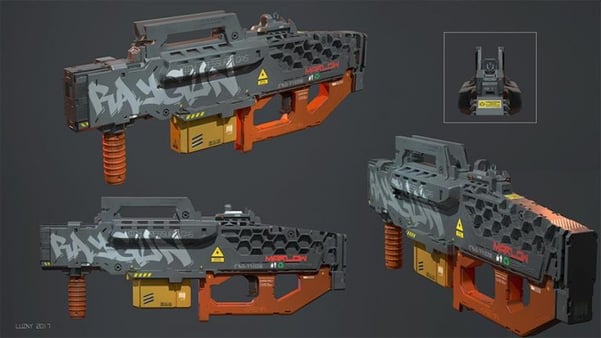 3D concept art by Krzysztof Luzny
3D concept art by Krzysztof Luzny 3D modelers
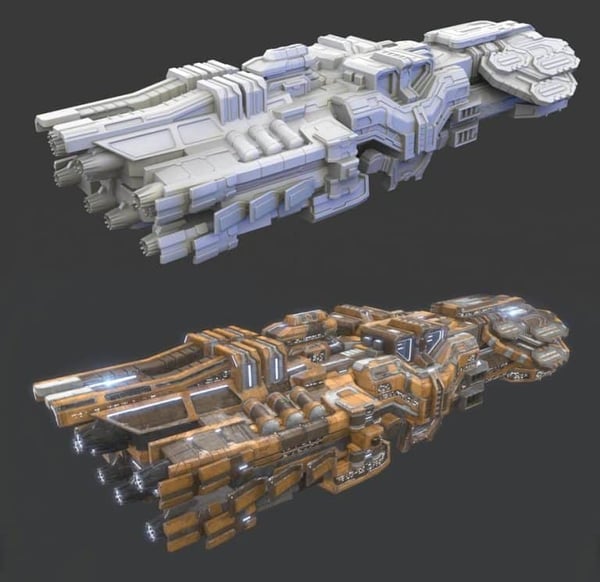 3d model by Victoria Passariello
3d model by Victoria Passariello Game animators
FX artists
Audio engineers / sounddesigners / composers
QA (quality assurance) / video game testers
Additional roles
3. Post-production
Additional game development resources:
Is your call of duty to make video games?

Tags: Game Design , Game Development , Game Programming
Elements Of Gameplay Programming For Video Game Designers
Source: https://www.cgspectrum.com/blog/game-development-process
Posted by: mercadoscregre.blogspot.com

0 Response to "Elements Of Gameplay Programming For Video Game Designers"
Post a Comment